Physical Address
304 North Cardinal St.
Dorchester Center, MA 02124
Physical Address
304 North Cardinal St.
Dorchester Center, MA 02124
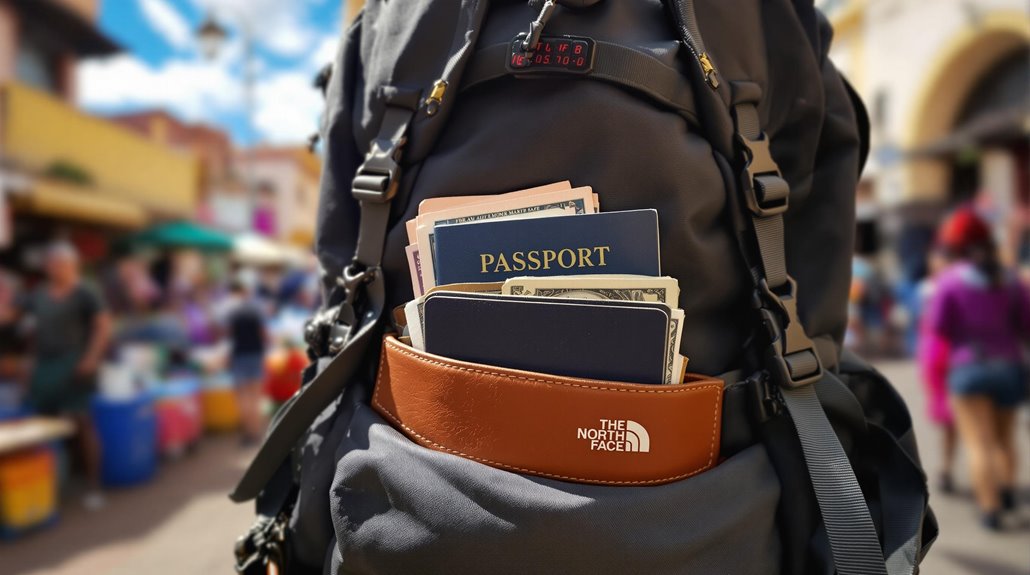
You've dreamed of exploring South America's lively cultures and breathtaking landscapes, but you've also heard the stories about safety concerns. Don't let fear hold you back – with the right preparation and street smarts, you can navigate this incredible continent confidently and securely. Whether you're planning to trek Machu Picchu or dance samba in Rio, these tried-and-true safety tips will help you stay one step ahead while making the most of your South American adventure.
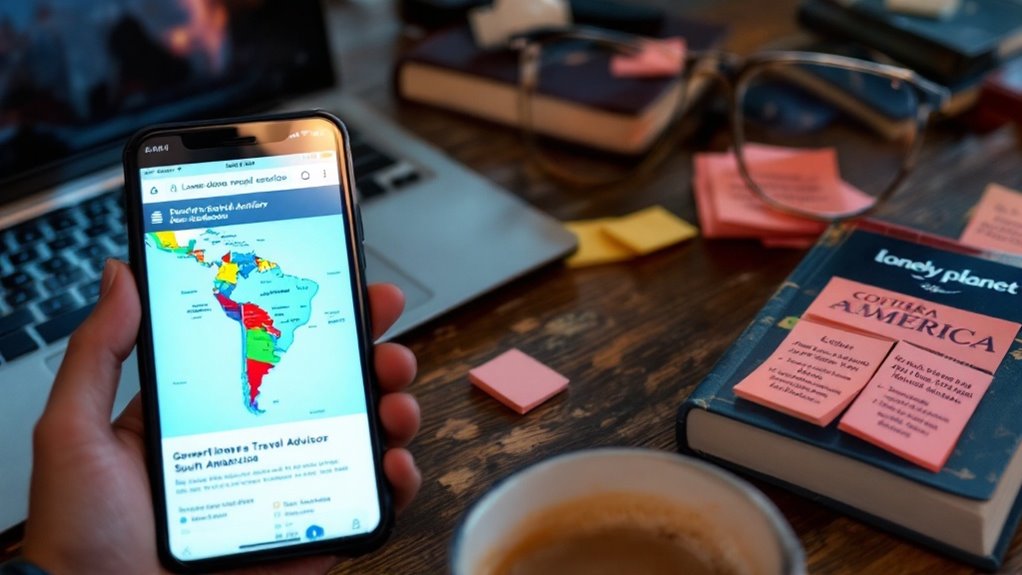
While South America offers incredible experiences, safety conditions can vary dramatically between and even within countries. You'll want to check the U.S. State Department's travel advisories first – Argentina, Chile, and Uruguay are your safest bets at Level 1, while you should avoid Venezuela entirely due to its Level 4 rating.
Keep tabs on the latest crime stats and peace indexes for your chosen destination. Uruguay's leading the pack as South America's safest country, followed closely by Chile and Argentina. Trusted local contacts can help you navigate the safest routes and accommodations during your visit.
Watch out for Ecuador's recent crime spike, though they're making progress with new security measures.
Don't forget to monitor local news for protests, strikes, and economic issues that could affect your trip. Be especially careful around election times, and steer clear of known cartel territories in cities like Guayaquil and Cali.
Getting around safely in South America starts with smart transportation choices. You'll want to stick with professional secure transportation services in high-risk areas, especially when traveling between major cities. Pre-book reputable taxi companies through apps like Uber or Cabify instead of hailing cabs on the street. Road incidents are particularly dangerous due to poor driving standards in many regions.
Choose trusted transport services and pre-book rides through verified apps when traveling in South America's major cities.
For maximum security during your travels:
When riding in vehicles, always sit in the back seat with windows up, and keep valuables hidden under seats or in floor compartments.
If you're taking public transport, avoid rush hours when pickpocketing peaks, and secure your luggage with sturdy locks.
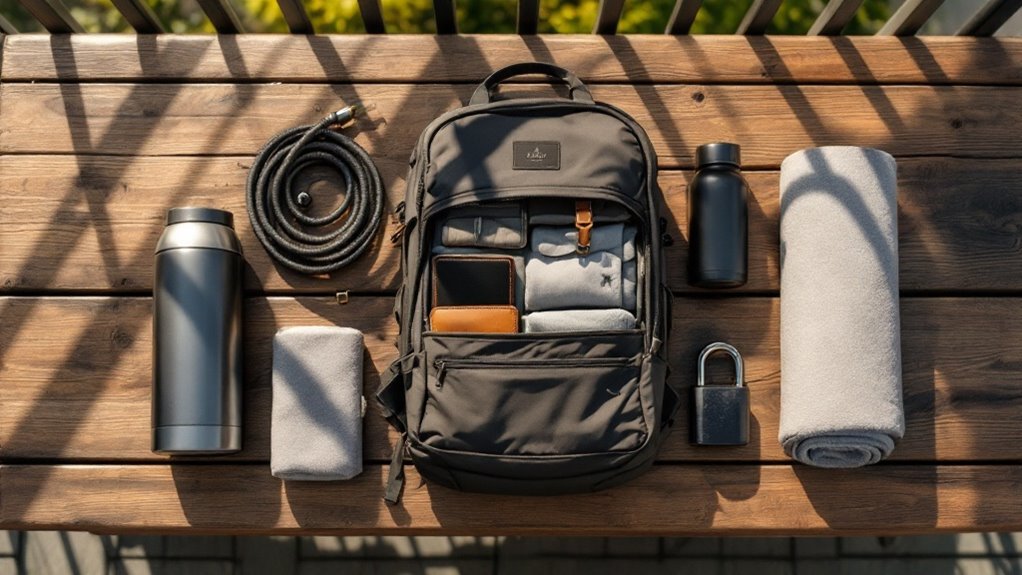
Packing efficiently can make or break your South American adventure. Choose a sturdy 40-60L backpack over wheeled luggage to navigate uneven streets, and use compression cubes to maximize space.
You'll want to pack light but smart – stick to a week's worth of versatile clothing that you can layer for different climates. Include at least two durable pants suitable for hiking and outdoor activities.
Don't forget your security essentials: an RFID-blocking wallet, money belt, and a decoy wallet with a few expired cards. Keep a waterproof pouch with copies of important documents stored separately from originals.
Pack a compact first-aid kit, headlamp, and water bottle with built-in filtration. For electronics, bring only what you truly need – your smartphone can replace bulky guidebooks and cameras.
Tourist hotspots can be a magnet for opportunistic criminals targeting distracted visitors. Keep your wits about you while enjoying South America's popular attractions, and don't let yourself get caught up in common distraction tactics.
Here's what thieves often look for:
Stay aware of your surroundings and keep your belongings close – that means wearing your backpack securely and keeping your phone tucked away when not in use.
If you're taking photos, do it quickly and discreetly. Watch out for suspicious behavior like lingering groups or individuals who seem overly interested in travelers.
When possible, blend in by dressing modestly and avoiding flashy accessories or branded clothing. Consider carrying cash in your front pockets instead of back pockets where it's more vulnerable to pickpockets.
Travel bloggers consistently recommend staying in well-lit, populated areas when exploring tourist destinations.
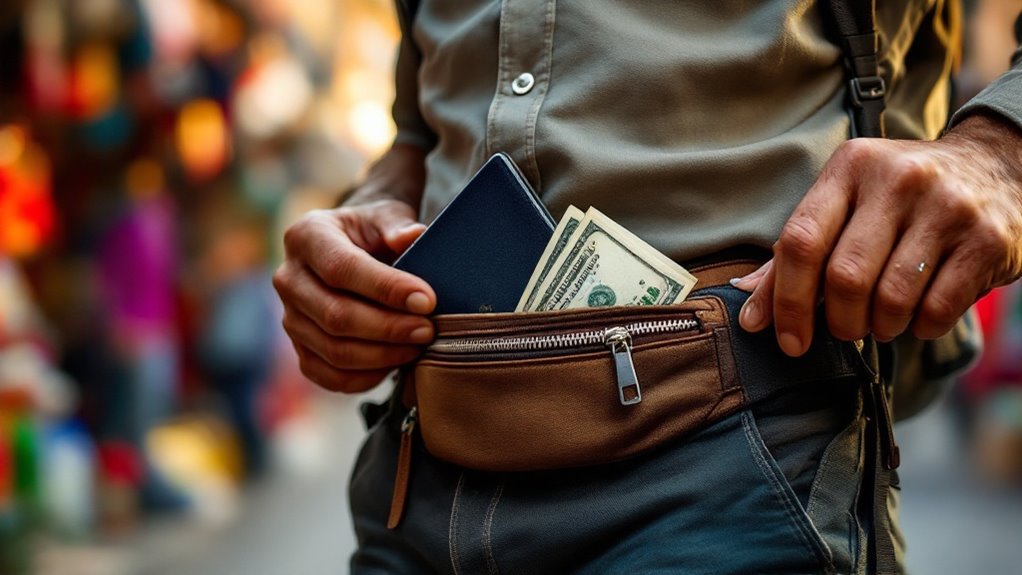
While exploring South America, how you handle money and valuables can make or break your trip.
You'll want to split your cash between multiple secure spots – think money belts, hidden pockets, and your locked hotel safe. Don't keep all your eggs in one basket: maintain separate bank accounts for daily spending and your main funds. Always keep small denominations handy for easier transactions and everyday purchases.
Stick to ATMs in well-lit, busy areas during daylight hours, and always check for card skimmers.
Keep a decoy wallet with just a few dollars in case of trouble, while your real valuables stay hidden. Don't flash expensive jewelry or electronics on the street.
When you're out and about, carry only what you need for the day. For extra peace of mind, store digital copies of your important documents in encrypted cloud storage.
Beyond keeping your valuables safe, staying healthy in South America requires careful medical planning. Visit a travel clinic at least 8 weeks before your trip to get essential vaccinations and personalized advice.
You'll need Yellow Fever certificates for several countries, especially if you're heading to the Amazon, and you should start any multi-dose vaccines early. Safe drinking water and properly cooked meals are essential to avoid food-borne illnesses during your travels.
Don't forget to check country-specific requirements and get your routine shots updated.
A good rule of thumb: it's better to over-prepare than scramble for medical help in unfamiliar territory.

Choosing secure lodging can make or break your South American adventure. Start by researching neighborhoods thoroughly – you'll want to stick to areas with good lighting, regular police presence, and positive traveler reviews.
When booking hotels, look for properties with 24/7 security staff and working surveillance systems. Don't forget to request a room away from the ground floor and street-facing windows. Always keep a torch nearby when staying at hotels for emergency situations.
Once you're checked in, store your passport and valuables in the room's safe (caja fuerte) and only carry copies when you're out exploring.
If you're going the hostel route, make sure there's a staffed reception desk around the clock and quality lockers for your belongings.
Whatever accommodation you choose, always check the fire exits, verify that room locks work properly, and keep your electronics out of sight.
Since many South American adventures take you to breathtaking heights, knowing how to handle altitude is essential for your safety.
Symptoms like headache and nausea commonly develop above 2,500m elevation, so being prepared is crucial.
You'll want to take it slow and steady when ascending, limiting yourself to 500m daily above 3000m elevation. Don't forget to drink plenty of water – aim for 3-4L daily – while avoiding alcohol and caffeine that can dehydrate you.
When visiting high-altitude destinations, remember these key practices:
If you're planning strenuous activities like hiking, wait until you've acclimatized for 48 hours.
Listen to your body, and don't hesitate to descend if symptoms worsen despite treatment.
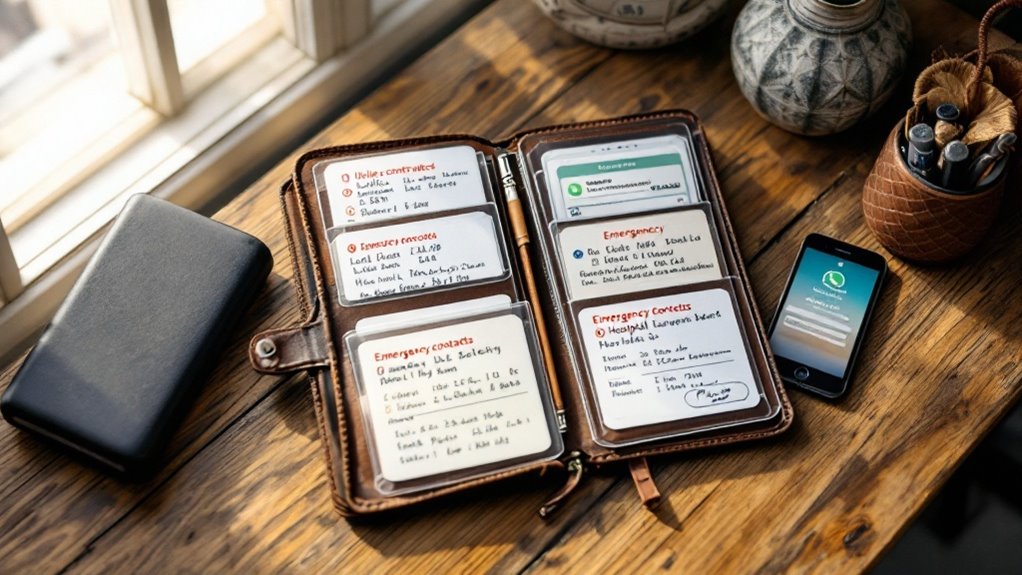
Having quick access to emergency contacts can mean the difference between a minor hiccup and a major crisis during your South American journey. Before you go, save local emergency numbers for police, fire, and medical services – they're different in each country.
While 911 works in Costa Rica, you'll need country-specific numbers elsewhere, like 133 for police in Chile. Modern mobile GSM phones can dial emergency numbers even when locked or without a SIM card installed.
Keep your credit card company's local hotlines handy – you'll thank yourself if your wallet goes missing. Jot down the U.S. Embassy numbers and register with the STEP program for real-time alerts.
Since English-speaking operators aren't always available, learn basic Spanish emergency phrases. Download offline maps marking hospitals and police stations, and save emergency numbers in your phone and on paper – you never know when you'll need them.
When traveling through South America, your ability to communicate can make or break your journey. Download offline translation apps and carry a phrasebook for backup. Learn essential Spanish and Portuguese phrases, focusing on greetings, numbers, and emergency terms like "¡Necesito ayuda!" (I need help!). Direct eye contact during initial meetings shows professionalism and respect in South American culture.
Remember that building relationships matters here. Start conversations with small talk about family or soccer before diving into business. Similar to TEFL requirements in Asia, having a good grasp of the local language will significantly improve your travel experience.
In South America, warm personal connections come first – discussing family and fútbol opens doors before talking shop.
When in doubt, apologize for language mistakes with a simple "Lo siento, estoy aprendiendo" – locals usually appreciate the effort to learn their language.
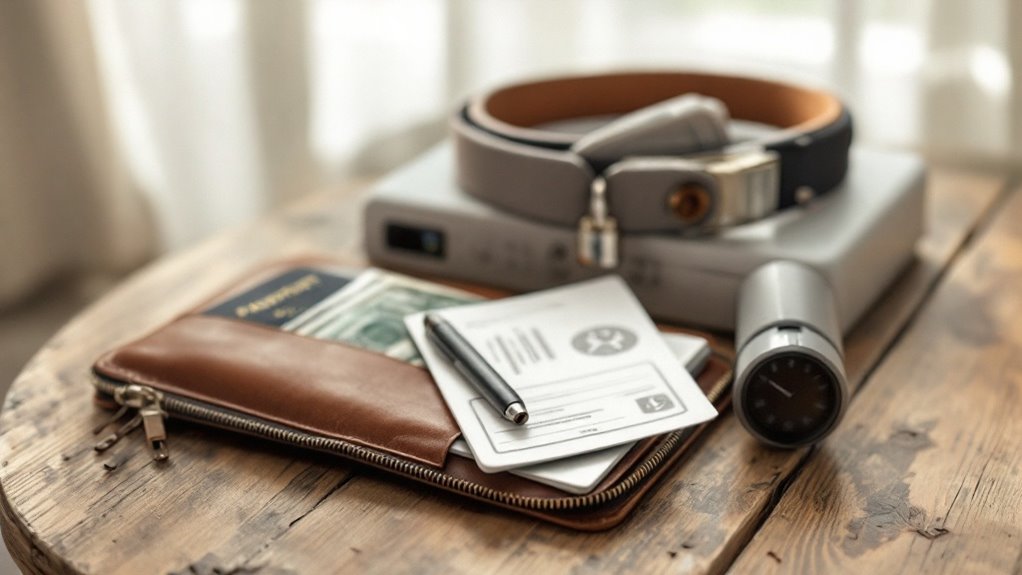
While mastering local communication helps you navigate South America, keeping your documents safe is equally important for a worry-free trip.
Always store encrypted digital copies in cloud services and carry a secure USB backup separate from your originals. Don't rely on hotel safes – instead, use a hidden money belt under your clothing for critical documents.
Protect against electronic theft by using RFID-blocking wallets and covers that have been lab-tested. Consider using a portable travel lockbox secured to fixed furniture in your accommodation for additional protection.
When possible, take advantage of local digital ID platforms like Brazil's Serpro or Argentina's Mi Argentina for added security.
Before departure, verify specific entry requirements through U.S. State Department advisories and check that you're compliant with local regulations.
Remember to conduct regular "security checks" to confirm your documents' locations throughout your journey.
Since travelers often become targets by standing out, mastering street-smart behavior can make or break your South American adventure.
You'll need to blend in with locals and stay alert in public spaces, especially in crowded areas where pickpockets thrive.
When crossing streets, remember that vehicles rarely yield and pedestrians rank lowest in traffic priority.
When you're out exploring, stick to well-lit streets and use verified transportation services.
If you're ever confronted, don't resist – hand over your decoy wallet and avoid sudden movements.
You will discover South America's a wonderful place when you've got your safety bases covered. Remember, it's all about staying alert without being paranoid. Trust your gut, keep those emergency numbers handy, and don't flash your valuables around. By following these simple safety tips, you're setting yourself up for an amazing adventure that'll give you stories to tell for years to come.